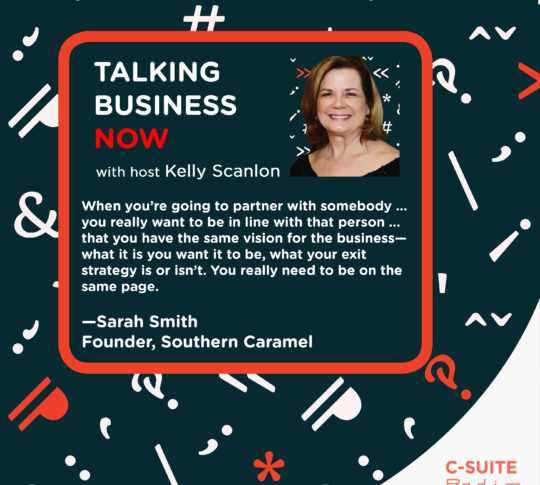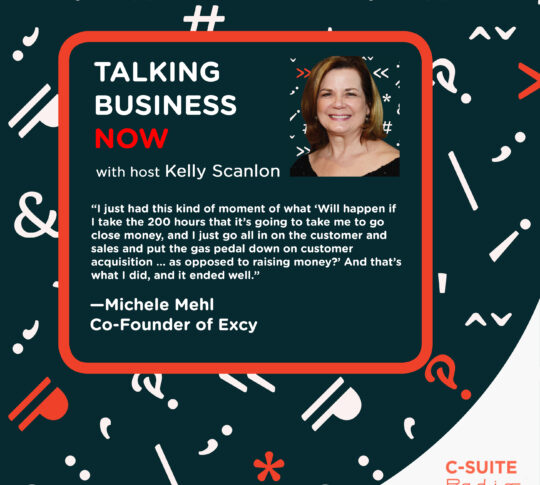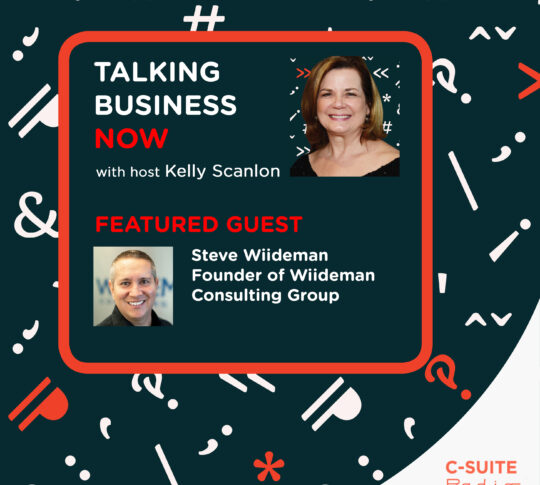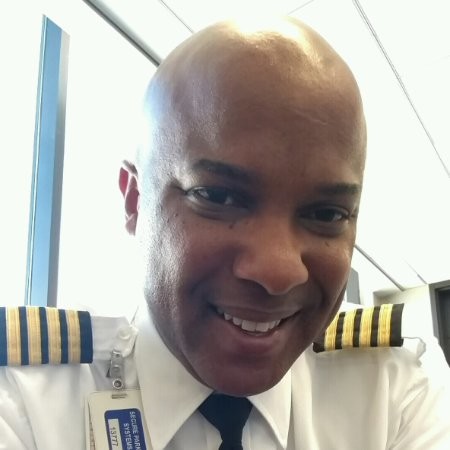
Listen to the podcast here, or read the transcript below for Drones Provide Flight Path to Entrepreneurship with guest Barry Alexander.
Kelly Scanlon
Welcome to Talking Business Now. I’m your host Kelly Scanlon. Thank you for joining us.
As businesses and individuals struggle with an uncertain future from the coronavirus pandemic, Barry Alexander has a clear vision for success. This serial entrepreneur has always been on the cusp of innovation, mainly in aviation. But now through his latest enterprise, Aquiline Drones, he’s created a full-service drone manufacturing and cloud technology company that’s poised to change the global landscape for the better. And he’s helping others create companies of their own.
Barry is a veteran aerospace professional with more than 25 years’ experience as an aviator, and he’s a licensed aircraft technician for both airplanes and helicopters operating at the highest technical levels. He has more than 20,000 hours of flight time logged in the global commercial aviation environment. And he spent most of his aviation career as an airline captain. He’s also spent time as a flight instructor, chief pilot, and director of operations and transport pilot of a Boeing 747 aircraft globally.
Barry is with us today to share how he’s built Aquiline Drones and his plans for the future of the company. Welcome, Barry.
Barry Alexander
Thanks, Kelly and an absolute pleasure to be on the show.
Kelly Scanlon
You have not only taken an industry that was growing by leaps and bounds anyway, but during the pandemic, you have found even more ways to grow your company and to help others as well. So, first, let’s talk about just exactly what Aquiline Drones does. Tell us about that.
Barry Alexander
Aquiline Drones is a full-service drone and cloud solutions company. The principal differentiator between Aquiline and most other drone-centric companies out there is that we have built an entire ecosystem and marketplace. And so our focus is not just on certain facets of the industry, namely manufacturing, plant operations, training, things of that natures, but we’ve built an entire ecosystem, and that allows us to pivot in situations where we may be required to change or alter our business focus, the pandemic being a very good example of that. We are able to offer services, such as online drone pilot training programs that would allow individuals, whether unemployed, underemployed, displaced, to quickly retool and take advantage of opportunities within the drone space. based on the current environment.
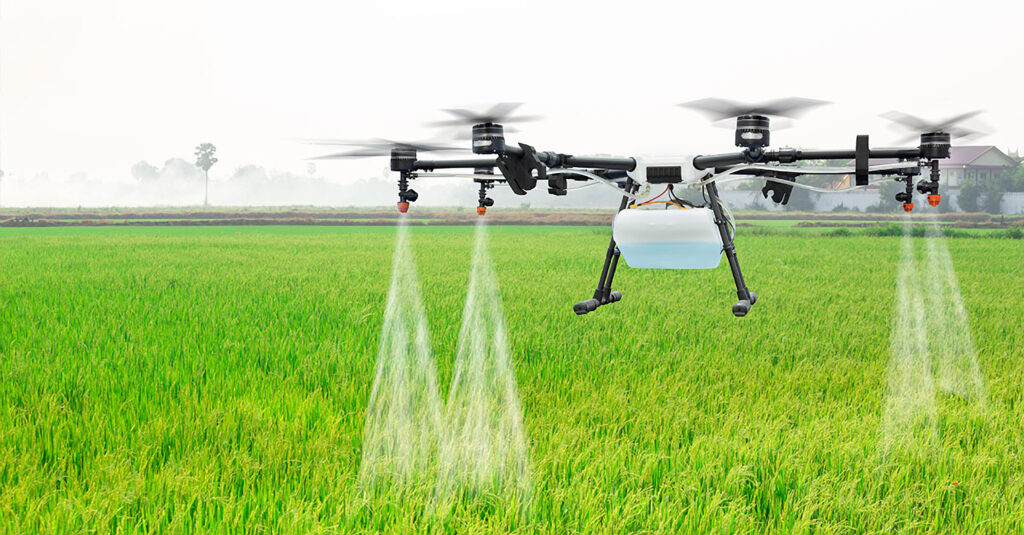
Kelly Scanlon
Having an end-to-end model allows you complete control over everything, you’re not dependent on anybody else.
Barry Alexander
That’s correct. Within that ecosystem, we have grown manufacturing, for example. And that allows us to manufacture our own products inhouse, all American-made, using, you know, 100% U.S. supply chain support with vendors, and also allows us to design and build drones that are specific to certain use cases.
Other examples of lines of business within that ecosystem is our inhouse insurance captive that allows us to provide or underwrite, you know, drone operations, products, services, things of that nature. Insomuch that from a competitive standpoint, we offer much lower premiums, because we also provide a very, very comprehensive drone pilot training program that allows us to essentially assess or mitigate risk in a way that your typical insurance company can’t in the industry. So being manufacturers of drones, providing very complete drone training programs where individuals are certified and put through a rigorous exercise, allows us to justify the numbers as far as our risk assessments and provide much lower insurance premiums.
We also provide cloud services, which are drone-centric, and what differentiates us from the rest of the industry that provides cloud services. When people think of or hear about clouds, They would normally associate that with Apple Cloud or Amazon’s AWS or IBM’s Red Hat.
Kelly Scanlon
Exactly.
Barry Alexander
But our cloud is different in that it’s designed for the drone industry. It is very scalable, customizable, it’s modular. So we can input information gathered by our drones onto our cloud storage data, manage it, model it, and provide the customer real-time data insights in a very, very specialized way that you would not find in your more rigid systems. So we provide end-to-end enterprise management solutions, specific to the customer’s wishes and desires.
Kelly Scanlon
Yeah, that’s pretty incredible. What are some of the different industries that you serve? And what are some of the applications of drones within those industries?
Barry Alexander
There’s a plethora of industries and see, for example, oil and gas. That’s a very definitive industry. Fire prevention and mitigation. That’s also a very well-defined industry. Inspections, which is a little broader, but there are many applications within the ambit of inspections. For example, bridge inspections, route inspections, tunnels, cell phone towers, wind turbine inspections, coastline erosion inspections, wildlife reserve. There is stuff in the area of law enforcement, which primarily deals with surveillance. There is stuff within department of transportation or public works that involves more inspection of infrastructure. So, there are many different industries and applications that have allowed more mature commercial uses of drones, where we are today and going forward.
Kelly Scanlon
In addition to being able to collect that specialized data that you referenced earlier and to be able to take photographs and so forth, you also are adding a safety benefit in some of these instances. For example, some of those inspections that you mentioned, it sounds like if you can send a drone in there versus a team of people, that’s a much safer way to conduct those inspections.
Barry Alexander
Oh, absolutely. I mean, there’s no reason why a 55-year-old individual should be climbing a ladder to inspect the roof which can be done, you know, from a safety standpoint, or exposing humans to unnecessary harm, when most of the data capture can be done by a drone. And also think of the added benefit as far as reducing the carbon footprint cost of the overall cost of operations. When you think of applications such as inspection of power lines throughout a distributed network, not having to use linemen and expose them to tremendous amount of danger. The drones get up there and have the ability to inspect the power lines for delamination, for the discharge of corona, and things of that nature, that would ordinarily cost a lot of money and be very, very potentially harmful when done by humans.
Kelly Scanlon
We’ve been hearing a lot about how drones can assist in healthcare crises as a result of the current COVID-19 pandemic. What are some of the viable applications of drones in the healthcare industry?
Barry Alexander
Namely, the disbursement of disinfectants as far as sterilizing areas, providing, you know, audible warnings and guidance to large masses of individuals. Also, you know, scanning, you know, masses of individuals for increases in body temperature, which is somewhat of an impending sign of poor health associated with the virus. So, through thermal imagery, those determinations can be made from a distance and also from a vantage point which is, you know, the drone being in the air.
Kelly Scanlon
Besides the hospitalizations and the deaths because of the pandemic and, you know, we’re just hearing those numbers go up every day, it’s also caused an economic recession that has brought record high unemployment rates in 2020. Aquiline Drones, though, has recently launched a new program called Flight to the Future, that as I understand it, helps people get employed within the drone industry, and it’s even helped some people launch some new businesses. Can you tell us about that?
Barry Alexander
Oh, absolutely. In the gig economy, there are certain opportunities that are somewhat fueled by a troubled economy. Specific to the pandemic that has ushered in unique societal challenges, the Flight to the Future program was designed, not necessarily for the pandemic, but the timing was apt in that when we got ready to launch the program was really at the onset of the pandemic. And so because the pandemic provided these challenges as far as higher unemployment rates or people being unemployed or displaced from their current job activity, this was a quick way for them to retool and get back into the workforce.
And so it’s very easy for an individual to enroll in the Flight to the Future program, which is essentially an online drone pilot training program, where we provide you with all the information through a well-designed curriculum that allows you to become a licensed drone pilot in addition to some of the other noteworthy points about the program. We set up a business for you a small business and LLC that allows you to perform drone services as a business. And we also provide you free drone insurance for the first year through our drone insurance captive. We also provide you a free cloud subscription account with Aquiline for the first year.
Essentially, what you have at the end is a system where we’re adding more small businesses to the domestic economy, keeping in mind that small businesses are essentially the lifeblood of an economy. And so by creating this new wave of drone pilots, making them individual business owners, where they could also add additional employees, that allows us to bolster the economy through an active workforce development campaign that is geared toward creating more small businesses offering more business opportunity, and making more and more productive citizens that essentially add to the tax base through taxation system. And that, hopefully, will get economy turned around faster.
Kelly Scanlon
And what I think is really encouraging about the program is that you not only train and certify, you actually set them up for success as business owners by providing that license to the cloud by helping them form the LLC and some of the other things that you are providing as part of that. How long does the course last? How many weeks is it?
Barry Alexander
All start to finish, it takes about six to eight weeks to get done. But there are other aspects to it. As far as specializing in a certain area, matching the right equipment and sensors to your area of specialization, getting the business set up and started.
But the other important point I would like to make here is that we’re addressing both as the supply and demand sides of the equation. On the supply side, we supply labor. We are supplying trained and competent drone pilots who are essentially representatives of Aquiline.
But on the demand side of things, we are in the process of launching our novel, drone-on-demand app. Akin to Uber, any individual or business could download the app—it’s a mobile app—on any device. And they can essentially, order drone services like you would order an Uber service, Uber car service.
So as an individual, you may have the requirement to have an outdoor event like a wedding filmed on a certain day and you download the app. You put in that job request based on the date, the time, some basic environmental conditions, and you pay for the service, you send it through. And once it’s received on our end, that is vetted fully. For example, it’s vetted for legality. I mean, if you’re requesting that we fly over the White House, it’s obviously going to be denied. But if it’s a reasonable request, it’s vetted for legality, but it’s also vetted for suitability as far as going through our mission planning process dispatch. So ,on the day of the event, that job is posted on a jobs board that your drone pilots will have access to. So, just like an Uber driver, when they sign in, their admin panel is going to download or populate with all the available drone requests within proximity to where they are, and they will have the option to pick the jobs that are closest to them, or they pick jobs by the value of the job. The drugs priced at about $150 an hour, you know, minimum two hours. And the also have the option, actually they don’t have the option, we use what’s called a cognitive system that will only provide jobs to that individual drone pilot that he’s trained for, he or she is trained for, and have the expertise and equipment to perform.
And so they would pick the job, go to the job. They would have very limited interference with the actual job or the customer. So it’s all done, you know, as far as end-to-end connectivity, they deployed a drone, it goes out, it captures the data, and it streams that data, all the way to our cloud with stored managed models, and provided back to the individual, who may also have some interaction with the drone through voice command while the actual job is being recorded.
Kelly Scanlon
How long does it usually take between the initial request that someone makes the consumer makes through the app and the approval? Knowing that, yes, for my wedding or for my whatever the event is? I know that I’m going to have a drone there.
Barry Alexander
That’s a very, very good question. So, the minimum quest is three days. And it could extend to 12 months, if that’s when you have a requirement to have the job done. Three days, that will give us enough time, like I said to vet the requests for legality, but also run it through the mission planning and dispatch process where we actively, just like, we run like an airline, which we essentially are, where we taking the job requests, it goes into mission planning, we have to check the availability of equipment and legality of the pilots, ensure that we provide the dispatcher liability. We check the weather well in advance to make sure that there are no encumbrances that would affect us being able to provide you that quality service. And so the minimum time requirement is three days.
Of course, if there is something that requires immediate action, in certain use cases like law enforcement surveillance, where you may have an accident on the highway, or you may have a crime scene that needs them, then there are some contingencies that are in place to accommodate those real-time and special requests.
Kelly Scanlon
Another development that’s pretty exciting that has opened up for you is something called DRONE VOLT. and it’s in France. Tell us about that and how your company is engaged with that.
Barry Alexander
DRONE VOLT is a world-class drone manufacturer. It’s made up of five companies called, I mean, collectively called the Drone Group, the DRONE VOLT Group, and they recently acquired another company called AERIALTRONICS, out of the Netherlands. We acquired key production licenses for three lines of drones and camera sensor units, called PENSAR. So we have the exclusive licensing agreement to manufacture those drones in the U.S., using 100% U.S. supply chain support.
But also, we also have that sales and distribution agreement that we could sell and distribute the drones all over the U.S. and all over the world. So, we’ve essentially absorbed the entire manufacturing effort for DRONE VAULT in the U.S. under the Aquiline brand, and also allowed us to rebrand that effort.
DRONE VAULT is a publicly-traded company from France. And as part of the deal, we’ve entered into an agreement that allows us to exchange 10% of our value. So, where DRONE VAULT is a 10% equity, stock swap, for Aquiline, it’s a 10% equity swap. And so we will acquire 10% of there’s, they acquire 10% of ours, and likely look at some more areas under which we can cooperate to integrate down the road.
So, that that allows us to somewhat leapfrog into the manufacturing space. Now having the commercialized products that we could readily manufacture, which we are starting this month, here in Hartford, Connecticut, at our main headquarters and slowly expand into additional spaces that we’ve already secured and prepared, allowing us to increase our drone production capacity steadily and robustly.
Kelly Scanlon
Lots of room for sustainable growth and steady expansion. What a great opportunity coming right in the midst of the recession. You sound like you’re a fairly aggressive businessperson anyway, so no surprises there.
Talk to us a little bit about the future of drones and, for lack of a better word, drones and people cohabitating in this world. There might be some people who are listening that are still skeptical about drones and the impact that they will have on their uses and their impact on people. So, talk to us about that, and how you see people living together with drones as they become more and more a part of our lives.
Barry Alexander
That’s a very nice and well-balanced question. And I will try to give you as balanced an answer as I can. Drones are essentially aircraft, and they operate within the ambit of aviation within, you know, some defined airspace. If you look at the genesis of drones, they were introduced as toys, and so people regard them normally as gadgetry. And there’s usually the misconception of drones. And so they’re viewed as an annoyance, where there’s a potential for invasion of privacy.
So what the first thing that needs to happen is for us to provide the public with the thought leadership through responsible education, teaching people about AI technology and the benefits, but also including them in the conversation, so that you eventually gain the public trust and support and advocacy going forward. Our goal is obviously to make drones as commonplace as the everyday use of cars, but really to ensure, or to guarantee the public, that safe and responsible integration of drones and drone technology into society, such that they can harness the true and positive benefit of drones.
When used in just about every application use-case industry, we see the ability for drones to address the business’s bottom line as far as reducing cost of operations overall, but also removing humans out of harm’s way. As far as you know, the drones being the first responder, if you may, and mitigating any risk of damage or harm to humans from the onset. There’s also the environmental aspect of it, where drones provide that low carbon footprint. I mean, just think today, having an individual jump in a car from a pizza store, for example, to drive across town to deliver a pizza to collect $12. It’s somewhat archaic that we’re still doing this in today’s environment where there’s an opportunity for us to utilize technology, in a way, through Smart City applications, in a way that allows us to really, really optimize our environment.
With the use of technology, of course, drones been at the forefront of industry 4.0, we are now seeing the confluence of society, of technology that people can rely on more. You think of the pandemic, like we talked about before, where you are seeing new societal realities, as far as social distancing, more individuals working from home. So, the way in which people currently and will engage goods and services or commerce is different. And so we have to embrace drone technology as that technological application that is enhancing to our lifestyles.
Kelly Scanlon
That’s a great way to put it—enhancing our lifestyle. There’s just so many possibilities, and it’s still such a new industry. It’ll be very interesting to see where it goes as well as your company, Aquiline Drones. If listeners want more information about Aquiline Drones, how is the best way to find out more about it?
Barry Alexander
They could simply go to our website, which is AquilineDrones.com. Sometimes people get confused with the name. The name Aquiline, as you know, is Latin for like an eagle, an eagle’s beak. And so we refer to not just the dominance of the eagle, but the concave or convex shape of the eagle’s beak. But it’s spelled A-Q-U-I-L-I-N-E Drones, with an s, dot com. So that’s AquilineDrones.com. If you want to access our Flight to the Future online drone pilot training program. That’s A-D flight dot to, forward slash, future. That’s A-D, Alpha Delta, Flight to, forward slash, future and you can simply call us at area code 860-361-7958 and you’ll be passed through the correct department to assist you.
Kelly Scanlon
And for registering for that flight to the future and getting more information about it, the “to” in that is “to,” not the number 2. It’s AD Flight T-O, forward slash, future. And also we will have this information in the show notes. So anyone who didn’t have a pencil while they were listening, just go on out to the show notes for this episode, and you will find these links there.
Barry, you’re doing so many great things, not just your innovation and passion to figure out how to make drones and people cohabitate and successfully enhance our lifestyles. But what you’re doing during the pandemic to help others gain a new skill, start new businesses, that’s just phenomenal. Thank you so much for everything you’re doing and best of luck.
Barry Alexander
Thank you very much.
Kelly Scanlon
And I’m your host, Kelly Scanlon. Thanks for joining us today.

